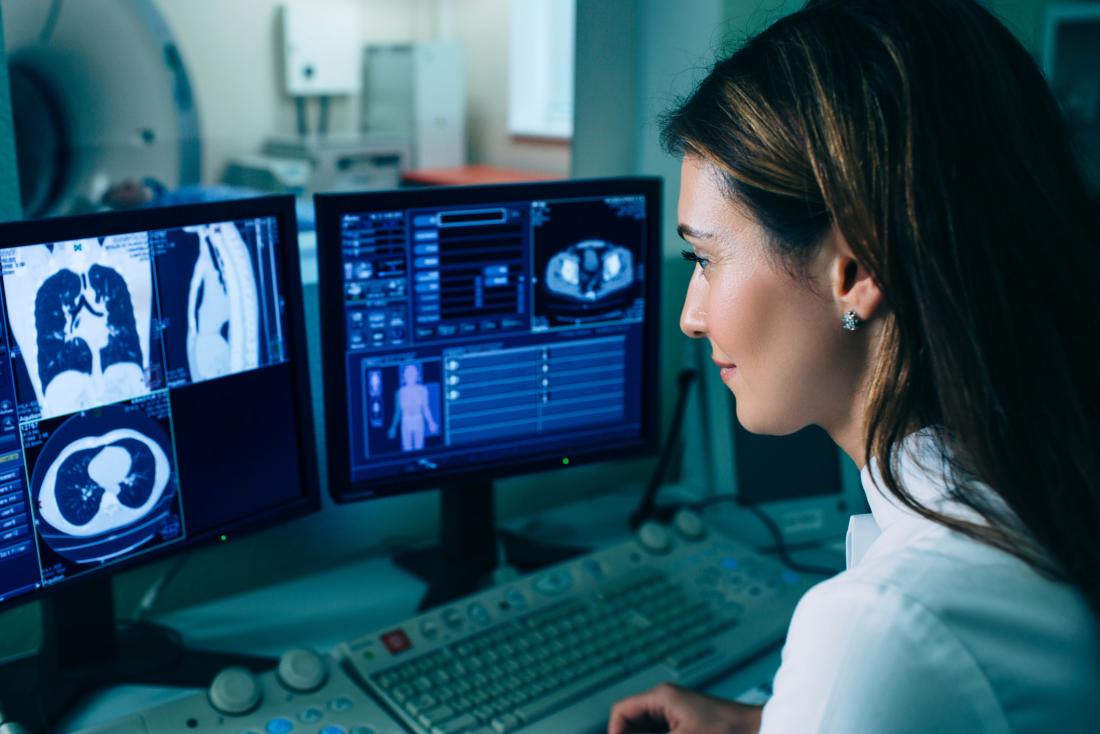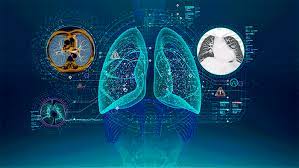Lung cancer diagnosis focused on AI system
Idea Description
Lung cancer is the leading cause of malignancy-related mortality worldwide due to its heterogeneous features and diagnosis at a late stage. Artificial intelligence (AI) is good at handling a large volume of computational and repeated labor work and is suitable for assisting doctors in analyzing image-dominant diseases like lung cancer. Scientists have shown long-standing efforts to apply AI in lung cancer screening via CXR and chest CT since the 1960s. Several grand challenges were held to find the best AI model. Currently, the FDA have approved several AI programs in CXR and chest CT reading, which enables AI systems to take part in lung cancer detection. Following the success of AI application in the radiology field, AI was applied to digitalized whole slide imaging (WSI) annotation. Integrating with more information, like demographics and clinical data, the AI systems could play a role in decision-making by classifying EGFR mutations and PD-L1 expression. AI systems also help clinicians to estimate the patient’s prognosis by predicting drug response, the tumor recurrence rate after surgery, radiotherapy response, and side effects. Though there are still some obstacles, deploying AI systems in the clinical workflow is vital for the foreseeable future.
Artificial intelligence (AI) has the potential to revolutionize the diagnosis of lung cancer by enabling early detection, accurate diagnosis, and personalized treatment planning.
- Here are some examples of how AI is being used in the diagnosis of lung cancer:
Image analysis: AI algorithms can analyze medical images, such as CT scans and X-rays, to identify patterns and abnormalities that may indicate the presence of lung cancer. AI-powered image analysis can detect lung nodules, measure their size, and track changes over time to determine if they are cancerous.
Molecular profiling: AI can analyze genetic and molecular data to identify specific biomarkers associated with lung cancer. This can help determine which patients are most likely to benefit from certain treatments, such as immunotherapy.
Clinical decision-making: AI can analyze large amounts of patient data, including medical records, lab results, and imaging studies, to provide personalized treatment recommendations based on individual patient characteristics and cancer stage.
Risk assessment: AI can predict a patient's risk of developing lung cancer based on various factors, such as age, smoking history, and family history.
Predictive modeling: AI can use machine learning algorithms to analyze large datasets and identify patterns and trends that can help predict outcomes for patients with lung cancer. This can help clinicians make informed decisions about treatment options and improve patient outcomes.
Overall, the application of AI in the diagnosis of lung cancer has the potential to improve the accuracy and speed of diagnosis, as well as enable personalized treatment planning and improve patient outcomes.
Market size and scalability
The market size for AI in the diagnosis of lung cancer is growing rapidly and is expected to continue to do so in the coming years. According to a report by Grand View Research, the global market size for AI in healthcare is expected to reach USD 66.8 billion by 2026, with oncology being one of the key areas for growth. In addition, the lung cancer diagnostics market is expected to grow at a CAGR of 9.1% between 2020 and 2027, according to a report by Mordor Intelligence.
The scalability of AI in the diagnosis of lung cancer depends on several factors, including the availability of data, the complexity of the algorithms, and the regulatory environment. In order to scale AI in this area, it is important to ensure that there is access to large amounts of high-quality data that can be used to train and validate the algorithms. In addition, the algorithms themselves need to be scalable, meaning that they can be applied across different clinical settings and patient populations.
Regulatory considerations are also important for the scalability of AI in the diagnosis of lung cancer. Regulatory bodies may require additional validation and testing of AI algorithms before they can be used in clinical practice, which can slow down the adoption and scaling of these technologies.
Despite these challenges, there are several initiatives underway to promote the scalability of AI in healthcare. For example, the National Institutes of Health (NIH) has launched the Cancer Imaging Archive (TCIA), which is a publicly available database of medical images that can be used to train and validate AI algorithms for cancer diagnosis. In addition, there are several consortia and partnerships between industry and academic institutions that are focused on developing and scaling AI technologies for healthcare.
Business model and potential ROI
The business model for the application of artificial intelligence (AI) in the diagnosis of lung cancer may vary depending on the specific AI technology and its intended use. Here are a few potential business models:
Direct-to-consumer: AI-based lung cancer screening tools could be offered directly to consumers for a fee. Patients could use the tool to assess their risk of lung cancer and receive personalized recommendations for follow-up care.
B2B: AI-based diagnostic tools could be sold to healthcare providers, such as hospitals or clinics, for use in diagnosing and treating patients with lung cancer. Providers would pay a fee for the use of the tool.
Partnership: AI-based diagnostic tools could be developed in partnership with pharmaceutical companies or medical device manufacturers, who could then market and sell the tool to their customers.
As for potential return on investment (ROI), the use of AI in the diagnosis of lung cancer could lead to several benefits, including:
Improved accuracy and speed of diagnosis, which could lead to earlier detection and treatment of lung cancer.
Personalized treatment planning, which could improve patient outcomes and reduce healthcare costs.
Increased efficiency in healthcare delivery, as AI-based tools could help clinicians make faster and more accurate diagnoses, reducing the need for additional tests or consultations.
Potential for cost savings over the long-term, as earlier detection and personalized treatment could reduce the need for expensive treatments and hospitalizations.
Overall, the potential ROI for the use of AI in the diagnosis of lung cancer will depend on the specific AI technology and its intended use, as well as the regulatory environment, market demand, and competition in the healthcare industry.
Technology
The application of artificial intelligence (AI) in the diagnosis of lung cancer involves the use of several technologies, including:
Machine learning algorithms: AI-based diagnostic tools use machine learning algorithms to analyze large datasets of medical images, patient data, and other information to identify patterns and abnormalities that may indicate the presence of lung cancer.
Computer vision: Computer vision technology is used to analyze medical images, such as CT scans and X-rays, to identify nodules or other abnormalities that may indicate the presence of lung cancer.
Natural language processing: Natural language processing technology is used to analyze unstructured data, such as medical notes and reports, to extract relevant information that can be used to diagnose lung cancer and develop personalized treatment plans.
Deep learning: Deep learning technology is a subset of machine learning that uses artificial neural networks to analyze large amounts of data and identify complex patterns and relationships. Deep learning is used in AI-based diagnostic tools to improve the accuracy and reliability of lung cancer diagnosis.
Cloud computing: AI-based diagnostic tools often require significant computing power and storage capacity, which can be provided through cloud computing. Cloud computing also enables real-time analysis of medical data, which can help healthcare providers make faster and more accurate diagnoses.
Overall, the application of AI in the diagnosis of lung cancer relies on several advanced technologies that are constantly evolving and improving, enabling faster, more accurate, and more personalized diagnosis and treatment of lung cancer.
Challenges The Idea is Addressing
The use of AI in the diagnosis of lung cancer has the potential to bring several benefits, including: Improved accuracy: AI algorithms can analyze large amounts of data with a high degree of accuracy, potentially leading to earlier detection and more accurate diagnosis of lung cancer. This can lead to better patient outcomes and improved survival rates. Personalized medicine: AI algorithms can help identify individual characteristics of patients that may affect the diagnosis and treatment of lung cancer. This can lead to more personalized treatment plans that take into account the patient's specific needs and characteristics. Increased efficiency: AI algorithms can analyze medical images and patient data much faster than human doctors, leading to faster diagnosis and treatment of lung cancer. This can help reduce waiting times for patients and improve resource utilization for healthcare providers. Reduced costs: By improving efficiency and accuracy, the use of AI in the diagnosis of lung cancer has the potential to reduce healthcare costs. This can be particularly important for patients with limited access to healthcare resources. Better patient experience: AI algorithms can help reduce the need for invasive procedures such as biopsies, reducing the discomfort and anxiety experienced by patients. Early detection: AI algorithms can help identify early signs of lung cancer, which can lead to earlier treatment and better outcomes for patients. Early detection is particularly important for lung cancer, as it is often diagnosed at a later stage when it is more difficult to treat. In summary, the use of AI in the diagnosis of lung cancer has the potential to bring several benefits, including improved accuracy, personalized medicine, increased efficiency, reduced costs, better patient experience, and early detection.
Benefits of Idea Implementation
Despite the potential benefits of AI in the diagnosis of lung cancer, there are still several challenges that need to be addressed: Data quality: AI algorithms require large amounts of high-quality data to be trained effectively. In the case of lung cancer diagnosis, access to high-quality medical images and patient data can be a challenge. In addition, there may be variations in the quality of medical images and annotations, which can affect the accuracy of the algorithms. Interpretability: The results generated by AI algorithms can be difficult to interpret and may require additional human expertise to make clinical decisions. This is particularly true for deep learning algorithms, which can be seen as black boxes that are difficult to understand and interpret. Generalization: AI algorithms trained on a particular dataset may not generalize well to new and unseen datasets. This can be a problem if the algorithm is used in a different clinical setting or with a different patient population. Regulatory challenges: There are regulatory challenges associated with the use of AI in medical diagnosis. For example, there may be concerns about data privacy and the ethical use of patient data. In addition, regulatory bodies may require additional validation and testing of AI algorithms before they can be used in clinical practice. Integration with clinical workflows: AI algorithms need to be seamlessly integrated into clinical workflows to be effective. This can require changes to existing clinical processes and may require additional training for healthcare professionals. Cost: The development and deployment of AI algorithms can be expensive, and there may be concerns about the cost-effectiveness of using AI in medical diagnosis. Addressing these challenges will require collaboration between clinicians, researchers, and AI developers, as well as continued investment in AI research and development.
Proposed Number of Team Members
6
Team Members


























